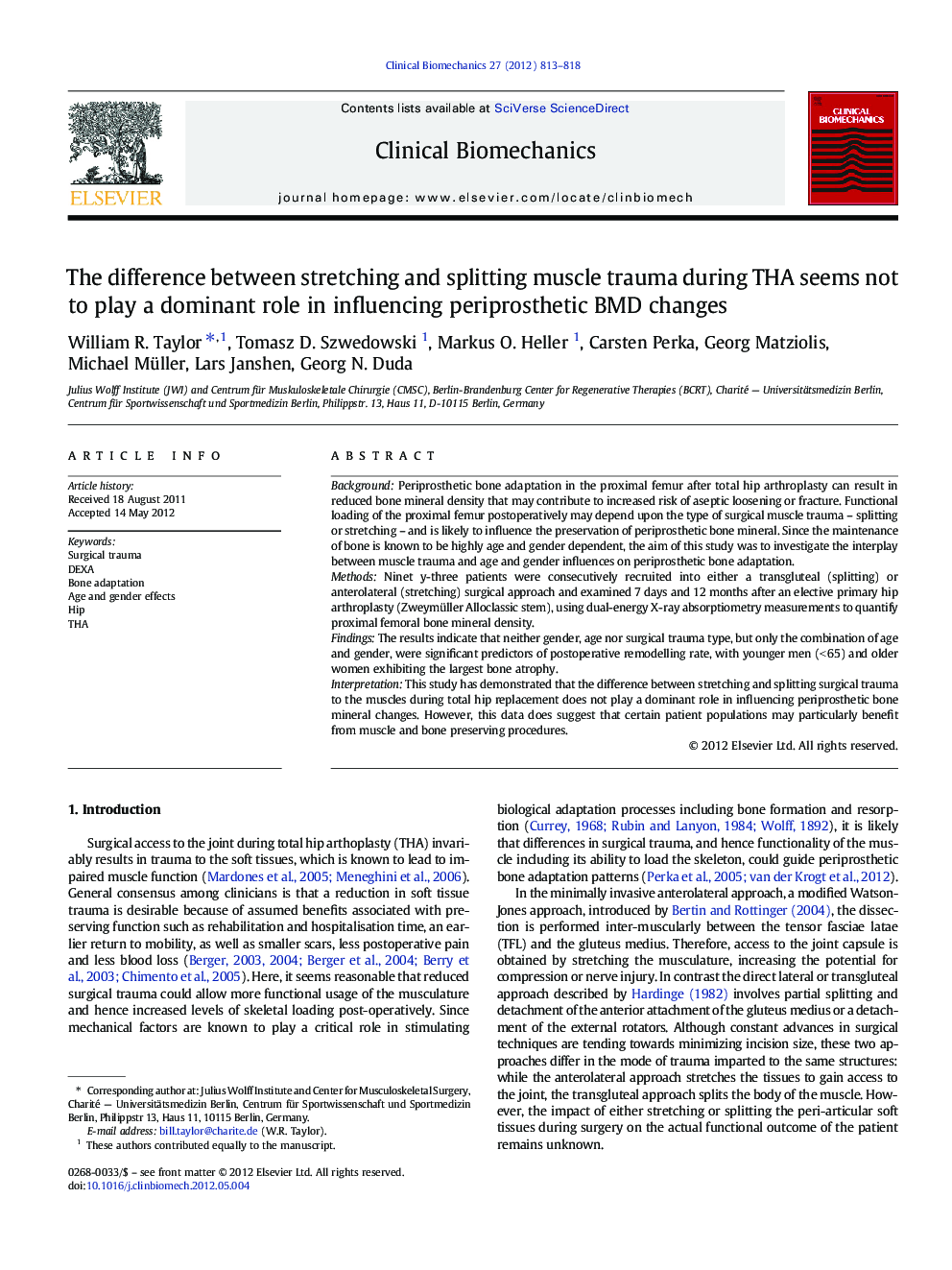| Article ID | Journal | Published Year | Pages | File Type |
|---|---|---|---|---|
| 6205164 | Clinical Biomechanics | 2012 | 6 Pages |
BackgroundPeriprosthetic bone adaptation in the proximal femur after total hip arthroplasty can result in reduced bone mineral density that may contribute to increased risk of aseptic loosening or fracture. Functional loading of the proximal femur postoperatively may depend upon the type of surgical muscle trauma - splitting or stretching - and is likely to influence the preservation of periprosthetic bone mineral. Since the maintenance of bone is known to be highly age and gender dependent, the aim of this study was to investigate the interplay between muscle trauma and age and gender influences on periprosthetic bone adaptation.MethodsNinet y-three patients were consecutively recruited into either a transgluteal (splitting) or anterolateral (stretching) surgical approach and examined 7Â days and 12Â months after an elective primary hip arthroplasty (Zweymüller Alloclassic stem), using dual-energy X-ray absorptiometry measurements to quantify proximal femoral bone mineral density.FindingsThe results indicate that neither gender, age nor surgical trauma type, but only the combination of age and gender, were significant predictors of postoperative remodelling rate, with younger men (<Â 65) and older women exhibiting the largest bone atrophy.InterpretationThis study has demonstrated that the difference between stretching and splitting surgical trauma to the muscles during total hip replacement does not play a dominant role in influencing periprosthetic bone mineral changes. However, this data does suggest that certain patient populations may particularly benefit from muscle and bone preserving procedures.
